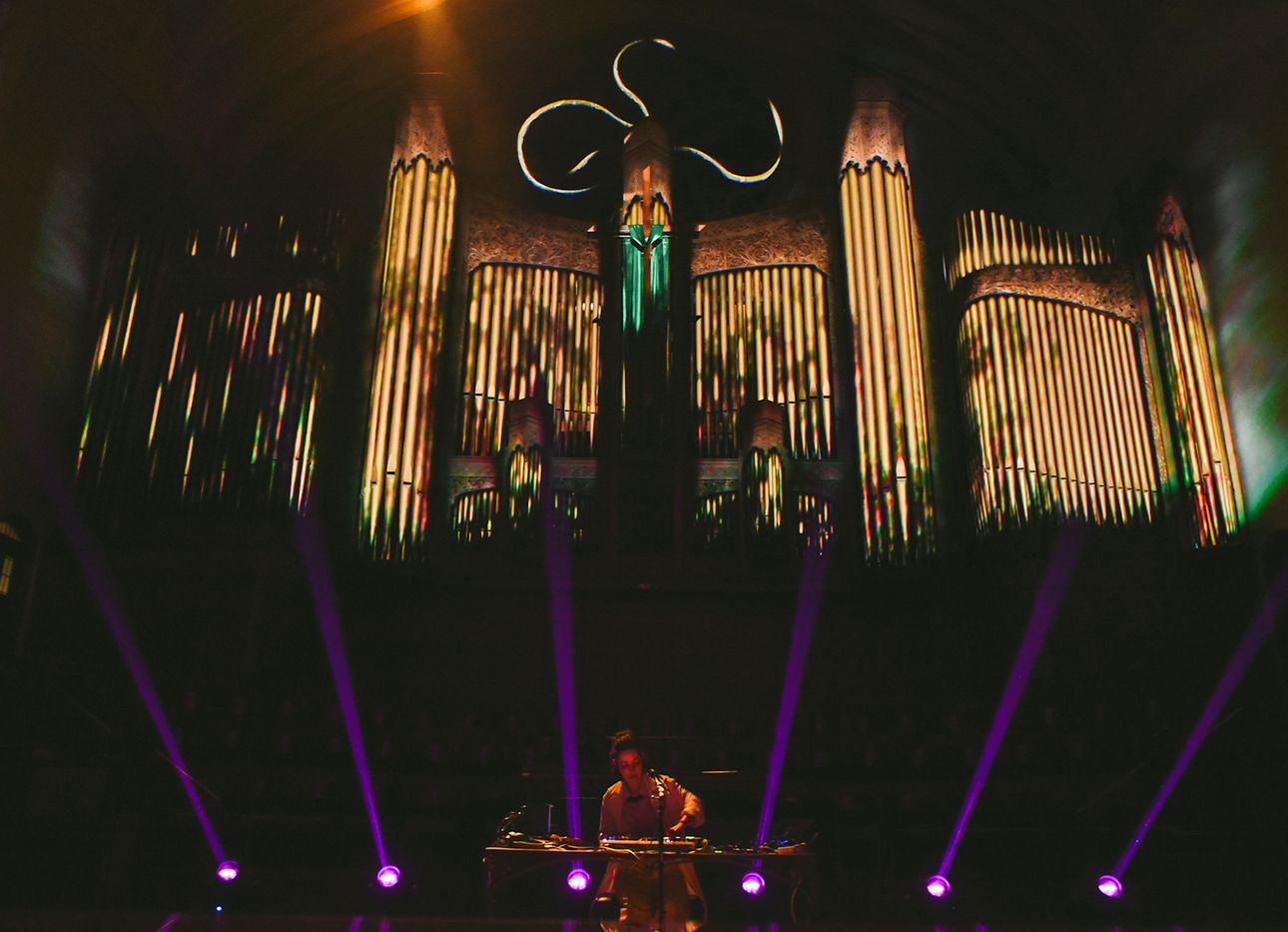
Ambient Church Gives Electronic Music a Surreal, Spiritual Home
For Brian Sweeny, the line between performance and religious experience is ambiguous to say the least. Starting in 2016, through an initiative called Ambient Church, he began renting churches for musicians to perform their interpretations of meditative, devotional, and minimal music, quickly drawing in both a host of dedicated ambient practitioners and experimental sets from crossover artists including Weyes Blood, Julianna Barwick, and Caroline Polacheck—all accompanied by stunning, site-specific light shows that transform venue walls into strobed, psychedelic canvases. What began as a Brooklyn-focused experiment has since ballooned into a cross-borough and -country endeavor, filling churches across New York and Los Angeles with an eclectic gamut of immersive, unconventional sounds.
Sweeny comes from a D.I.Y. background, having been a founding member of Brooklyn’s Body Actualized Center—a storefront he and his friends transformed, using found and Craigslist-sourced materials, into a yoga studio that morphed into a venue for events including raves, film screenings, and New Age concerts at night—until its 2014 closure. Ambient Church continues this penchant for idiosyncratic expressions of spirituality and spectacle, but in a more inward direction. This time, the crowd is a silent partner to the acoustic and visual might of a given space. It all makes for a singular, cerebral experience that blurs the boundaries between sacred and secular, while opening some of the most sonically-adept venues out there for a wider audience to appreciate.
We recently spoke with Sweeny about his roving multisensory project, the allure of ambient music, and what’s behind its distinct ability to impact listeners in deep, visceral ways.
Along with the acoustic benefits and aesthetic backdrops that churches provide, what do they bring to the performances you stage that more traditional venues can’t?
Some music is really delicate, especially when performed indoors, and needs complete quiet to be enjoyed—no clinking of the bar, no audience banter, no slamming of doors. When I first started Ambient Church, all of the art-focused venues in New York that could facilitate this kind of atmosphere were ruled by strict curatorial bodies that didn’t take contemplative space music seriously. I’ve always felt this music deserves the grandest stages, and the grandest accessible stages happen to be within the resonant walls of beautiful, historic churches.
What draws you to ambient music?
I tend to think of ambient as more of an adjective, describing a sound or approach to musical creation rather than a genre. I love all music, and regularly go on all-night internet rabbit holes to the farthest reaches of any given category. The music I discover that ends up on repeat is the trippiest and most interesting, but it also has this ineffable spiritual resonance. I love exploring sound worlds that ebb and flow, seemingly without direction but always end up somewhere surprising. Any music like that belongs at Ambient Church. Lately, I’ve been enjoying a new wave of music that you could classify as “fourth world.” Acts like Salamanda from Seoul, YAI from Brooklyn, and Carmen Villain from Oslo come to mind.
You call these performances “community experiences,” and never “concerts.” What makes you draw this distinction?
The concert is a cultural construct that Ambient Church certainly overlaps with, in that we feature amplified and unimaginably beautiful performances. But I feel use of that word pigeon-holes the experience in a way that may unnecessarily evoke preconceived notions of what to expect to those who have never been in attendance. Concerts are also for fans of artists, to the exclusion of all those unaware. We like to host sound and light experiences in beautiful spaces that are open to all, featuring pioneering, notable, and emerging artists.
The use of concerts in this context also doesn’t give deference to the jaw-dropping visual performances that occur at all our events, and are integral to the experience as a whole. We love working with visual artists to create site-specific works that highlight the architecture of these spaces. Some artists are particularly great at this, such as Eric Epstein, who has been blowing audiences away with his visual artistry since the beginning of the project.
How has your approach to Ambient Church shifted over time?
The vision has changed mostly in terms of its inclusivity. In the early stages, the audience I was trying to attract was mostly my peers in New York’s weird-music scene and their friends. Now it’s become more ambitious to include a wider audience and in less culture-dense geographic areas.
The initial idea was to simply throw the perfect show. What I’ve realized over the years is that all the building blocks of what I felt it took to create this resulted in a hybrid experience of musical discovery and group healing. People take away either one or both, based on their individual needs.